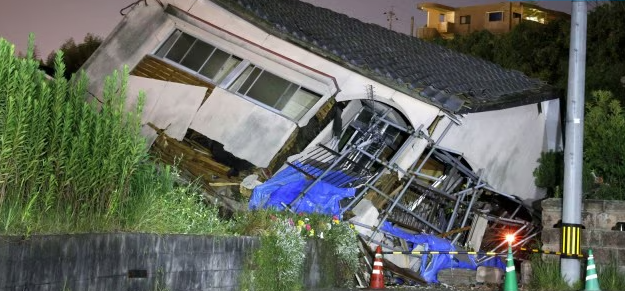Japan’s Sado Gold Mines Added to UNESCO World Heritage List (GS Paper 1, History)

Introduction
- On July 27, 2024, Japan’s Sado gold and silver mines were officially added to the UNESCO World Heritage List.
- This inclusion follows the withdrawal of South Korea's objections, which had initially opposed the listing due to concerns over the historical context of forced labor during World War II.
Historical Background of the Sado Mines
- The Sado mines, located on Sado Island in Japan, have a rich history that dates back to the 12th century.
- These mines were significant sources of gold and silver, continuing their operations well into the post-World War II era.
- The Sado mines are renowned for their traditional artisanal mining techniques, which stand in stark contrast to the mechanized mining methods used in Europe during the same period.
- This historical and cultural heritage highlights the evolution of mining technologies and methods over several centuries, making the Sado mines a unique and important site in the history of mining.
Controversy and Diplomatic Negotiations
- South Korea initially raised objections to the Sado mines' UNESCO listing due to the use of Korean forced labor during Japan’s occupation of Korea.
- Korean laborers were subjected to harsh conditions, reportedly more severe than those faced by Japanese workers.
- The historical injustices associated with these forced labor practices prompted South Korea to express concerns about the potential oversight of this dark chapter in history.
- Japan strongly advocated for the inclusion of the Sado mines on the UNESCO World Heritage List, emphasizing their cultural, historical, and archaeological significance.
- Japan argued that the listing would help preserve traditional mining activities and recognize the unique social organization that developed around the mines.
- After extensive diplomatic negotiations, South Korea agreed to support the listing, provided that there would be appropriate acknowledgment of the forced labor issues associated with the mines.
UNESCO Listing Process and International Impact
- The inclusion of the Sado mines on the UNESCO World Heritage List is part of a broader initiative to recognize and commemorate historical mining sites in Japan.
- This recognition aims to boost tourism and raise global awareness about the site's cultural and historical importance.
- Furthermore, it seeks to address historical injustices by ensuring that the darker aspects of the mines’ history, including the forced labor practices, are acknowledged and remembered.
About the Sado Gold and Silver Mines
- Historical Significance and Production: The Sado mines began operations in the 17th century and were once among Japan’s largest producers of gold. The mines were particularly prominent during the Edo period, contributing significantly to the country's gold output.
- Forced Labor and Unique Features: The mines employed forced labor, including political exiles, and are known for their extensive underground tunnels, some extending over 2,000 meters. These tunnels exemplify the demanding nature of the mining work conducted at the site.
- Closure and UNESCO Nomination: The Sado mines ceased operations in 1989 due to declining production. The site was subsequently nominated for the UNESCO World Heritage List, emphasizing its historical and cultural significance in Japan's complex mining history.
Conclusion
- The addition of Japan’s Sado gold and silver mines to the UNESCO World Heritage List marks a significant moment in the recognition of historical mining sites.
- This inclusion not only highlights the cultural and historical value of the Sado mines but also addresses past injustices by acknowledging the forced labor practices associated with the site.
- As Japan celebrates this milestone, the Sado mines' recognition on the global stage serves to enhance tourism and global understanding of Japan's mining heritage while ensuring a comprehensive reflection on its historical complexities.


